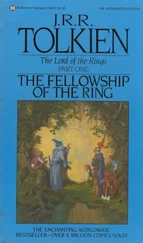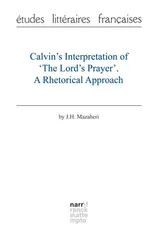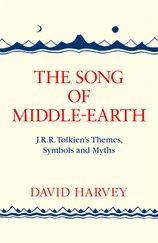Helge Fauskanger - J.R.R. Tolkien’s Lord’s prayer and Hail Mary in Quenya - Syntactical and Etymological Analysis
Здесь есть возможность читать онлайн «Helge Fauskanger - J.R.R. Tolkien’s Lord’s prayer and Hail Mary in Quenya - Syntactical and Etymological Analysis» весь текст электронной книги совершенно бесплатно (целиком полную версию без сокращений). В некоторых случаях можно слушать аудио, скачать через торрент в формате fb2 и присутствует краткое содержание. Жанр: Языкознание, на английском языке. Описание произведения, (предисловие) а так же отзывы посетителей доступны на портале библиотеки ЛибКат.
- Название:J.R.R. Tolkien’s Lord’s prayer and Hail Mary in Quenya: Syntactical and Etymological Analysis
- Автор:
- Жанр:
- Год:неизвестен
- ISBN:нет данных
- Рейтинг книги:5 / 5. Голосов: 1
-
Избранное:Добавить в избранное
- Отзывы:
-
Ваша оценка:
- 100
- 1
- 2
- 3
- 4
- 5
J.R.R. Tolkien’s Lord’s prayer and Hail Mary in Quenya: Syntactical and Etymological Analysis: краткое содержание, описание и аннотация
Предлагаем к чтению аннотацию, описание, краткое содержание или предисловие (зависит от того, что написал сам автор книги «J.R.R. Tolkien’s Lord’s prayer and Hail Mary in Quenya: Syntactical and Etymological Analysis»). Если вы не нашли необходимую информацию о книге — напишите в комментариях, мы постараемся отыскать её.
J.R.R. Tolkien’s Lord’s prayer and Hail Mary in Quenya: Syntactical and Etymological Analysis — читать онлайн бесплатно полную книгу (весь текст) целиком
Ниже представлен текст книги, разбитый по страницам. Система сохранения места последней прочитанной страницы, позволяет с удобством читать онлайн бесплатно книгу «J.R.R. Tolkien’s Lord’s prayer and Hail Mary in Quenya: Syntactical and Etymological Analysis», без необходимости каждый раз заново искать на чём Вы остановились. Поставьте закладку, и сможете в любой момент перейти на страницу, на которой закончили чтение.
Интервал:
Закладка:
Etym. – The Etymologies (in LR:347-400)
GL – The Gnomish Lexicon (in Parma Eldalamberon #11)
Letters – The Letters of J.R.R. Tolkien
LotR – The Lord of the Rings
LR – The Lost Road
MC – The Monsters and the Critics
MR – Morgoth’s Ring
PM – The Peoples of Middle-earth
QL – The Qenya Lexicon (in Parma Eldalamberon #12)
RGEO – The Road Goes Ever On (second edition)
RS – The Return of the Shadow
SD – Sauron Defeated
UT – Unfinished Tales
VT – Vinyar Tengwar
WJ – The War of the Jewels
This analysis was originally published in Tyalië Tyelelliéva #18. Shortly afterwards, another analysis appeared in Vinyar Tengwar #43. The authors of the latter analysis were able to draw on various other Tolkien manuscripts that occasionally throws some light on the more obscure features of the Quenya text. Some information from this article has been added – in brackets and with red letters [1] I’ve put that text into footnotes (Xitsa).
– to my own analysis. Otherwise, my original published text remains virtually unaltered. Those who want to compare this study to the Vinyar Tengwar article may download a PDF version of the relevant issue from this URL:
http://www.elvish.org/VT/sample.html
1. Introduction
J.R.R. Tolkien was a man of faith, and in subtle ways his beliefs and philosophical notions were reflected in his narratives. " The Lord of the Rings is of course a fundamentally religious and Catholic work," he noted in 1953, "unconsciously so at first, but consciously in the revision" (Letters:172). Still there are no direct or explicit references to Christianity or Catholicism in LotR, or for that matter in The Hobbit or The Silmarillion . It has, however, long been known that Tolkien made a Quenya translation of the Lord’s Prayer (Matthew 6:9-13). This, of course, does not mean that he planned to insert this prayer into his invented world; the long ages of Middle-earth supposedly far predated the time of Jesus, so this would be historically impossible even within the fictional context. Rather we should see this translation as a confirmation of Tolkien’s statement that to him, it was the invented languages and not the fictional history that was the primary thing: "The invention of languages is the foundation. The stories were made rather to provide a world for the languages than the reverse. To me a name comes first and the story follows" (Letters:219).
Some have contended that Tolkien’s languages are so inextricably bound up with his fiction that they literally would not make any sense if removed from the Middle-earth setting, the languages as such being dismissed as nothing but figments of "literary art". Such a view, however, seems to represent a sad diminishing of Tolkien’s efforts, as well as a profound lack of appreciation for the infinite flexibility of Language. On occasion, Tolkien himself might modestly dismiss his languages as "nonsense" or a "mad hobby" (MC:239, Letters:8), but in reality he did know the nature and potential of his work: He noted about his languages that they " have some existence , since I have composed them in some completeness" (Letters:175, emphasis added). Hence they could in principle be used to translate any text, even if the text as such had no direct connection to the narratives or the invented world. And as can now be seen, Tolkien did produce at least one such translation: a Quenya version not only of the Pater Noster or Lord’s Prayer, but also of the Ave Maria or Hail Mary. The two are written consecutively and may well be considered one work. This is presently the sole known example of Tolkien rendering into one of his languages a text not originating with himself.
Why did Tolkien translate these prayers? It seems quite unlikely that he actually used the Quenya versions in his own worship. In Vinyar Tengwar #32, where Carl F. Hostetter and Patrick Wynne presented their own Quenya version of the Lord’s Prayer (made before they got to see Tolkien’s translation), Hostetter in his editorial observed: "Translations of the Lord’s Prayer have enjoyed a long tradition as representative texts for use in side-by-side comparisons of various languages." But since Tolkien apparently never made any efforts to have his Quenya-language Lord’s Prayer published, it does not seem that he intended it to be a general "sample" of the language. Most likely he wrote down these texts for no more profound reason than his own amusement – which should not, however, be taken as an indication of a frivolous attitude towards these prominent religious texts. The translation as such was probably serious enough, all the more so since these prayers would be important to Tolkien as a Catholic.
Quenya texts as substantial as this one rarely appear. If we limit the scope to what is more or less LotR-style Quenya, the only substantial texts (as opposed to isolated words or short or unconnected sentences) that have been available so far number no more than three or four. They are Namárië in LotR (and RGEO:66-67), the latest version of the Last Ark poem in MC:221-222, Fíriel’s Song in LR:72, and Cirion’s Oath in UT:305, 317. Fíriel’s Song is not even quite LotR-style Quenya, and Cirion’s Oath consists of only two sentences. The addition to our corpus of the 73-word Lord’s Prayer/Hail Mary text, which may even be post-LotR, must therefore be seen as an important event, justifying a quite thorough analysis.
The analysis here offered is organised into three parts. The first, relatively brief part will simply establish a Text to be analysed. In this case, Tolkien’s handwriting is luckily quite legible and unambiguous, with only a few uncertain points (such as the distribution of spaces). I will (summarily) try to justify the readings I prefer, often based on examples of Quenya that were published earlier.
The next part, the Syntactical/Analytical Commentary , will match the texts with typical English versions and analyse the Quenya versions word by word, but yet within the textual context: This is where observations regarding syntactical relationships within the text will be set out.
The Lexical/Etymological Commentary constitutes the final and by far the longest part of this analysis, providing detailed studies of the individual words, organised alphabetically. Here I will discuss how these words relate to material that has been published earlier, and try to infer what history and etymology Tolkien may have imagined for the various words and elements. Still, this is not to be taken as a mini-version of a Quenya Etymological Dictionary; while I will sometimes go into greater detail than a mere technical analysis of the text before us might seem to warrant, I will try to maintain the connection with the text itself. So to ensure easy referencing, nearly all of the entry-heads cite the word in the exact form it has in this text, including any inflectional or pronominal endings – which are then discussed in that same entry, or in the case of endings occurring repeatedly, cross-referenced to the entry for another word exemplifying that suffix. (A few suffixed elements that occur repeatedly in the text are however given separate entries, if that seems convenient, but no attempt is here made to be entirely consistent regarding such details of the presentation. Hence you will find a separate entry for the pronominal ending - mma our , whereas the ending - lya thy is discussed in the entry for esselya thy name .) The discussion of various technical oddities will be worked into the Lexical Commentary wherever it is convenient; thus there is a discussion of some of the strange aorists occurring in these texts in the entry for the word care, simply because this word provided a good opportunity to discuss the normal aorist formation and its apparent diachronic development. By using concrete words and forms found in the texts as the starting-point for such discourses, I hope to avoid making the discussions needlessly abstract.
Читать дальшеИнтервал:
Закладка:
Похожие книги на «J.R.R. Tolkien’s Lord’s prayer and Hail Mary in Quenya: Syntactical and Etymological Analysis»
Представляем Вашему вниманию похожие книги на «J.R.R. Tolkien’s Lord’s prayer and Hail Mary in Quenya: Syntactical and Etymological Analysis» списком для выбора. Мы отобрали схожую по названию и смыслу литературу в надежде предоставить читателям больше вариантов отыскать новые, интересные, ещё непрочитанные произведения.
Обсуждение, отзывы о книге «J.R.R. Tolkien’s Lord’s prayer and Hail Mary in Quenya: Syntactical and Etymological Analysis» и просто собственные мнения читателей. Оставьте ваши комментарии, напишите, что Вы думаете о произведении, его смысле или главных героях. Укажите что конкретно понравилось, а что нет, и почему Вы так считаете.












